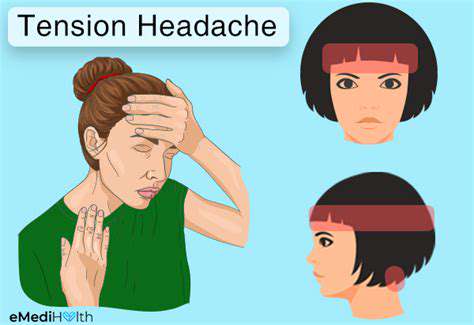Head Hurts When I Blow My Nose: Causes and Remedies

Allergies and Nasal Congestion
Allergies and Nasal Congestion
Allergies can trigger a cascade of symptoms, and nasal congestion is a common one. Seasonal allergies, like hay fever, or year-round allergies, such as pet dander or dust mites, can inflame the nasal passages, leading to swelling and a build-up of mucus. This swelling can make breathing through your nose difficult, creating a feeling of stuffiness and congestion that often makes blowing your nose painful or uncomfortable. Understanding this connection between allergies and nasal congestion is crucial for effective management and relief.
If you suspect allergies are the culprit behind your nasal congestion and subsequent head pain, consider keeping a journal of your symptoms. Note the time of year, weather patterns, or potential exposures to allergens. This detailed record can help identify patterns and triggers, assisting your doctor in diagnosing the issue and recommending appropriate treatment strategies.
Sinusitis
Sinusitis, an inflammation of the sinuses, can lead to nasal congestion and pressure, which often results in discomfort or even pain when you blow your nose. Bacterial or viral infections can cause the sinuses to become swollen and filled with mucus, leading to a range of unpleasant symptoms, including facial pain, headaches, and the sensation of a blocked nose. Proper diagnosis and treatment are essential to resolve sinusitis and alleviate the associated pain, ensuring you can breathe freely and comfortably again.
Nasal Polyps
Nasal polyps are noncancerous growths that develop in the lining of the nose. They can cause nasal congestion, which can lead to difficulty breathing through the nose and discomfort, especially while blowing your nose. While typically slow-growing, these polyps can significantly obstruct the nasal passages, reducing airflow and causing persistent pressure and discomfort. Early detection and appropriate treatment are crucial to maintain healthy breathing function and prevent complications.
Deviated Nasal Septum
A deviated nasal septum, where the wall separating the nostrils is not straight, can also contribute to nasal congestion and discomfort when blowing your nose. This structural abnormality often leads to one nostril being partially blocked, making breathing uneven. The resulting nasal congestion can worsen with infections, leading to pressure and pain. Treatment options vary, depending on the severity, and range from simple saline rinses to surgical interventions. Consulting with a healthcare professional is essential for proper diagnosis and to discuss appropriate treatment plans for your specific condition.
Nasal Infections
Viral or bacterial infections within the nose can lead to inflammation, swelling, and a build-up of mucus, resulting in nasal congestion. The congestion can exacerbate pain or discomfort when trying to clear the nasal passages by blowing your nose. Identifying the specific type of infection is crucial for determining the appropriate treatment, whether it's over-the-counter medications or a doctor's prescription. Prompt treatment can minimize the duration and severity of the infection and promote faster healing.
Other Medical Conditions
Certain medical conditions, though less common, can also cause nasal congestion that worsens when you blow your nose. Conditions like tumors or certain structural issues, though less common, can cause problems with nasal passages and breathing. Consulting a doctor is critical to properly diagnose and treat any underlying medical conditions. They can provide the necessary care and ensure you're on the path to complete relief from persistent nasal congestion and related headaches. Early intervention is essential in cases where a medical condition underlies the problem.
Dry Air and Dehydration
Understanding Dry Air
Dry air, a common environmental condition, can significantly impact nasal passages and contribute to headaches. The nasal membranes, delicate tissues lining your nose, need moisture to function properly. When the air is dry, these membranes can become irritated and inflamed, leading to discomfort. This irritation can trigger a cascade of effects, including the swelling of blood vessels, which can, in turn, increase pressure within the head and potentially cause pain.
Exposure to dry indoor environments, especially during winter months when heating systems are frequently used, can result in a noticeable drying out of the nasal passages. This can manifest as a feeling of dryness, itching, and even bleeding. Consequently, when you blow your nose, the already irritated tissues are further aggravated, potentially leading to pain.
The Link Between Dehydration and Headaches
Dehydration, a condition where the body loses more fluids than it takes in, can play a crucial role in head pain, especially in conjunction with dry air. When you are dehydrated, your blood volume decreases, which can lead to reduced blood flow to the brain and other tissues, contributing to a feeling of tightness or pressure within the head. This, coupled with dry nasal passages, can create a perfect storm for headaches.
Dehydration can also impact the delicate balance of electrolytes in your body. Electrolyte imbalances can affect nerve function and trigger headaches, making dry air-induced nasal irritation even more problematic. Maintaining proper hydration is essential for overall well-being and can help mitigate the risk of headaches related to dry air or dehydration.
Nasal Congestion and Pressure
Dry air can lead to nasal congestion, a common symptom where the nasal passages become swollen and blocked. This congestion can create pressure in the sinuses, which are air-filled cavities located behind your nose and eyes. This pressure can directly contribute to headaches, particularly if you are already experiencing dryness and irritation in your nasal passages.
Sinus Infections and Headaches
While dry air and dehydration can directly contribute to headaches in connection with nose-blowing, they can also indirectly create an environment ripe for sinus infections. A compromised immune system due to dehydration, combined with irritated nasal tissues, can make you more susceptible to viral or bacterial sinus infections. These infections can lead to significant inflammation and pressure in the sinuses, often triggering severe headaches.
Other Potential Causes of Head Pain When Blowing Your Nose
Head pain associated with nose-blowing isn't always solely related to dryness or dehydration. Allergies, certain medications, or even structural issues in the nasal passages can also contribute. If you experience frequent headaches when blowing your nose, or if the pain is accompanied by other symptoms such as fever, nasal discharge, or facial pain, consulting a medical professional is essential to determine the underlying cause and receive appropriate treatment. Identifying the cause is crucial for effective management and preventing future episodes.
Home Remedies and Prevention Strategies
Understanding Home Remedies for Sinus Pressure
When you're experiencing headaches associated with sinus pressure, several home remedies can provide relief. Steam inhalation is a popular method; inhaling steam helps to open nasal passages and reduce pressure. Adding menthol or eucalyptus oil to hot water can enhance the soothing effects. It's essential to breathe slowly and deeply to allow the vapor to penetrate effectively.
Another effective home remedy is the use of a saline nasal spray. By moisturizing the sinuses, saline sprays can help decrease inflammation and ease discomfort. This can be particularly beneficial during allergy season or in dry climates. Regularly using saline solutions can not only help reduce headaches but also promote overall nasal health.
Prevention Strategies for Sinus Headaches
Preventing headaches linked to sinus issues often involves addressing the underlying causes. Staying hydrated is crucial; drinking plenty of fluids can thin mucus and help keep sinuses clear, reducing the likelihood of headaches when blowing your nose. Additionally, consider using a humidifier, especially in winter months, to add moisture to the air and prevent your nasal passages from drying out.








